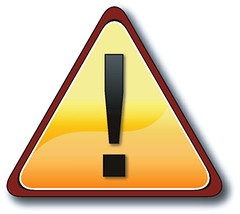Key Takeaways
- PFAS exposure means you come into contact with “forever chemicals” that stay in your body and the environment.
- You get about three times more PFAS from food than from drinking water.
- Pennsylvania communities face the highest PFAS exposure risk among Great Lakes states.
- Simple actions, like using water filters and choosing different foods, can lower your PFAS exposure.
What Is PFAS Exposure and Why Does It Matter?
PFAS are a group of man-made chemicals used since the 1940s. They make pots nonstick, clothes waterproof, and carpets stain-resistant. However, these “forever chemicals” resist heat, oil, grease, and water—and they also resist breaking down in nature and in your body. As a result, PFAS exposure can cause health problems like liver damage, thyroid issues, and certain cancers.
Where PFAS Exposure Happens in Your Community
To find out how PFAS exposure affects people, researchers looked at drinking water, food, recreational spots, and industrial sites across Michigan, New York, and Pennsylvania. They built an interactive map and dashboard so residents can check their own neighborhoods.
• Drinking Water
Out of 2,593 public water systems tested in the three states, 1,272 showed PFAS contamination. That puts about 23 million people at risk. Pennsylvania had the most systems with PFAS, while Michigan had the fewest. However, even if your water system tests clean now, new testing might find PFAS later.
• Food
Researchers studied 19 common foods, such as shrimp, crab, butter, and olive oil. They found that people get three times more PFAS from what they eat than from what they drink. Seafood had the highest PFAS levels. However, large amounts of butter and olive oil also added up to big PFAS exposure. In general, Pennsylvania and New York ate more seafood and olive oil than Michigan, raising their PFAS exposure risk.
• Recreation
Swimming, boating, or fishing in PFAS-contaminated lakes and rivers adds to PFAS exposure. Western New York, especially around Lake Ontario, showed higher risks from airborne PFAS pollution settling on the water. Meanwhile, areas in Philadelphia also scored high for recreational PFAS exposure.
• Industrial Emissions
PFAS can leak from Superfund sites, military bases, airports, and factories. These chemicals travel through air and water, affecting nearby communities. Mapping these sites helps people see industrial PFAS exposure risks in their area.
Comparing Major Cities
Looking closer at Detroit, New York City, and Philadelphia reveals different PFAS exposure patterns.
Detroit
Detroit’s food-related PFAS exposure risk is above average for Michigan. Products like ground beef and baked tilapia sold locally have shown PFAS. Bacon, sausage, and crab add even more. Since Detroit’s water hasn’t been fully tested for PFAS, residents don’t know their drinking water risk yet.
New York City
Most of New York City’s water tests show low PFAS levels. As a result, public drinking water there poses a minimal PFAS exposure threat. Yet city residents eat a lot of butter and olive oil, which makes food the main PFAS exposure source for them.
Philadelphia
Like New York City, Philadelphia has low PFAS in public water. Still, the city’s food choices—especially shrimp, bacon, and sausage—raise PFAS exposure through diet. Moreover, Philadelphians face higher PFAS exposure when they swim or boat in local water bodies.
How to Lower Your PFAS Exposure Risk
Fortunately, you can take steps today to reduce PFAS exposure in your daily life.
Use a Certified Water Filter
If your public water system shows high PFAS, install a filter certified to remove these chemicals. Look for filters with testing data that prove PFAS removal.
Choose Different Foods
Cut down on foods known to carry PFAS. For example, eat less butter, olive oil, shrimp, and crab. Instead, try fruits, vegetables, and grains that tested low for PFAS.
Check Local Recreation Spots
Before swimming or fishing, consult your local map to see if the water body has PFAS concerns. Choose cleaner places when possible.
Support Local Testing and Clean-Up
Write to your local leaders to ask for more PFAS testing in water systems and farms. Back policies that require industries to limit PFAS emissions.
Explore the Interactive Dashboard
Use the online PFAS exposure dashboard to see risk levels in your county, city, or neighborhood. It can help you decide which steps to take next.
Why PFAS Exposure Data Matters
Understanding PFAS exposure patterns helps communities act. When people know their risks, they can push for better rules on PFAS testing and pollution cleanup. In addition, families can make smarter choices about what they eat and where they swim.
Your Role in Reducing PFAS Exposure
You don’t have to wait for new laws. Start by talking to friends and neighbors about PFAS exposure risks. Share what you learn from the dashboard and official resources. Then, join local groups that press for safer water and cleaner soil.
Final Thoughts
PFAS exposure is a hidden threat in our kitchens, playgrounds, and water supplies. Yet with clear data and simple steps, you can cut your risk. Explore the dashboard, review your diet, and improve your water filter. By staying informed, you protect both your health and your community.
Frequently Asked Questions
What exactly is PFAS exposure?
PFAS exposure happens when you swallow, breathe, or touch chemicals that resist breaking down. They come from products like nonstick pans, stain-proof carpets, and firefighting foam.
Why does most PFAS exposure come from food?
Researchers found that everyday foods, especially seafood, butter, and olive oil, carry PFAS. You eat far more PFAS through these foods than through tested drinking water.
Can a home water filter remove PFAS?
Yes. Some home filters use special carbon media or reverse osmosis to capture PFAS. Make sure the filter you buy has tested data showing it removes PFAS.
Where can I find if my local water has PFAS?
Use online tools built by researchers and the EPA to see PFAS testing results. Your local health department might also have information on public water systems.
